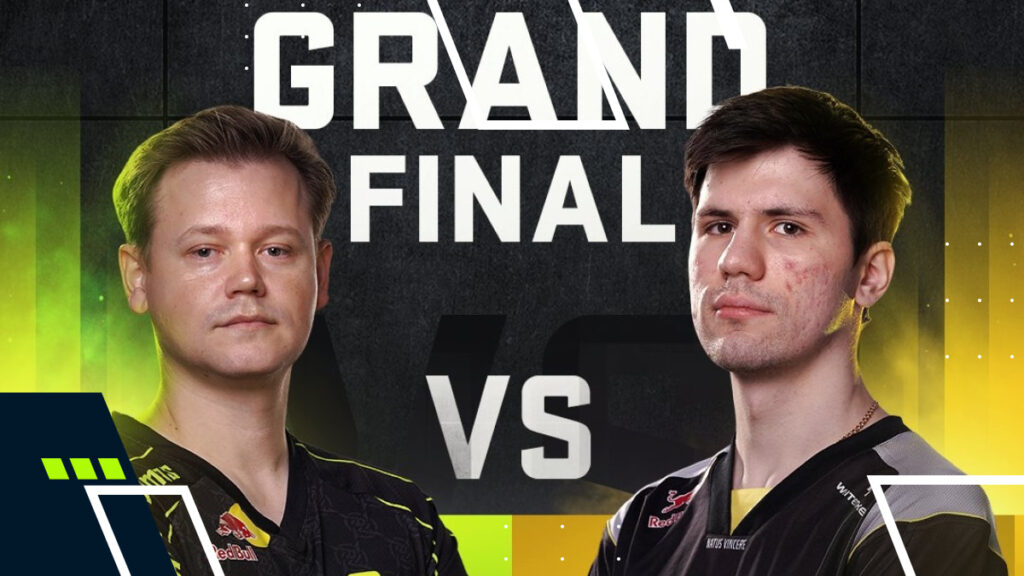Dota 2 The International: All TI Winners By Year
Dota 2’s The International (TI) has a storied history since its debut in 2011. As the crown jewel of esports, it’s highlighted by the most iconic moments imaginable. From record-breaking prize pools, unforgettable storylines, and legendary plays, every TI has shaped the legacy of competitive Dota.
Join us in channeling our inner Weaver as we turn back the clock to celebrate every Dota 2 The International winner and relive how each team answered the call of glory by lifting the Aegis of Champions.

The Aegis of Champions at TI11. Image source: Dota2ti on X
- 1. Dota 2 The International Winners List
- 2. All Dota 2 TI Winners By Year (2011-2025)
- NAVI (2011)
- Invictus Gaming (2012)
- Alliance (2013)
- Newbee (2014)
- Evil Geniuses (2015)
- Wings Gaming (2016)
- Team Liquid (2017)
- OG (2018)
- OG (2019)
- Team Spirit (2021)
- Tundra Esports (2022)
- Team Spirit (2023)
- Team Liquid (2024)
- Team Falcons (2025)
- 3. FAQs
- 4. References
Dota 2 The International Winners List
Here is the complete list of The International tournament winners and runners-up, including details such as location, final scores, and prize pools.
| Year | Winner | Runner-Up | Score | Location | Prize Pool |
|---|---|---|---|---|---|
| 2011 | Natus Vincere | EHOME | 3–1 | Cologne, Germany | $1,600,000 |
| 2012 | Invictus Gaming | Natus Vincere | 3–1 | Seattle, USA | $1,600,000 |
| 2013 | Alliance | Natus Vincere | 3–2 | Seattle, USA | $2,874,380 |
| 2014 | Newbee | Vici Gaming | 3–1 | Seattle, USA | $10,923,977 |
| 2015 | Evil Geniuses | CDEC Gaming | 3–1 | Seattle, USA | $18,429,613 |
| 2016 | Wings Gaming | Digital Chaos | 3–1 | Seattle, USA | $20,770,460 |
| 2017 | Team Liquid | Newbee | 3–0 | Seattle, USA | $24,787,916 |
| 2018 | OG | PSG.LGD | 3–2 | Vancouver, Canada | $25,532,177 |
| 2019 | OG | Team Liquid | 3–1 | Shanghai, China | $34,330,068 |
| 2021 | Team Spirit | PSG.LGD | 3–2 | Bucharest, Romania | $40,018,195 |
| 2022 | Tundra Esports | Team Secret | 3–0 | Singapore | $18,930,775 |
| 2023 | Team Spirit | Gaimin Gladiators | 3–0 | Seattle, USA | $3,143,063 |
| 2024 | Team Liquid | Gaimin Gladiators | 3–0 | Copenhagen, Denmark | $2,602,164 |
| 2025 | Team Falcons | Xtreme Gaming | 3–2 | Hamburg, Germany | $2,686,068 |
| 2026 | TBD | TBD | TBD | Shanghai, China | TBD |
Note: There was no The International in 2020 due to the COVID-19 pandemic.

TI13 had a beautiful green and gold theme. Image source: Dota2ti on X
All Dota 2 TI Winners By Year (2011-2025)
Let’s discuss all the winners of The International, starting all the way back in 2011.
NAVI (2011)
The inaugural event saw Valve invite 16 teams to compete at GamesCom in Cologne for a $1.6 million prize pool, the biggest of any esports tournament at the time. NAVI barreled through Moscow Five, Invictus Gaming, and Scythe Gaming to reach the Grand Final.
NAVI had a one-game advantage against EHOME coming through the Upper Bracket, and managed to beat their opponents 3-1 to become the first-ever champions of The International.
NAVI roster at TI1:
- Danil “Dendi” Ishutin
- Oleksandr “XBOCT” Dashkevych
- Dmitriy “LighTofHeaveN” Kupriyanov
- Ivan “ArtStyle” Antonov
- Clement “Puppey” Ivanov
Invictus Gaming (2012)
The Chinese powerhouse, Invictus Gaming, got off to a flying start at The International 2012, topping their group before smashing through EG. However, NAVI sent Invictus Gaming to the lower bracket.
Invictus Gaming eliminated EHOME, Team DK, and LGD Gaming for a spot in the Grand Final, where they took revenge on NAVI with a 3-1 win, becoming the first Chinese champions.
Invictus Gaming roster at TI2:
- Yao “Zhou” Chen
- Luo “Ferrari_430” Feichi
- Jiang “YYF” Cen
- Wong “ChuaN” Hock Chuan
- Zeng “Faith” Hongda
Alliance (2013)
Alliance went undefeated in the Group Stage, and beat LGD Gaming 2-0, Team DK 2-1, and NAVI 2-0 for a spot in the Grand Final.
In the Grand Final, when the teams were tied 2-2, Alliance’s s4 pulled off the $1 million Dream Coil. This stopped NAVI players from teleporting back to defend their base, as Alliance claimed victory.
Let’s not forget: TI3 also saw the most infamous play in Dota 2 esports history, Dendi’s “fountain hook” antics against TongFu.
Alliance roster at TI3:
- Jonathan “Loda” Berg
- Gustav “s4” Magnusson
- Henrik “AdmiralBulldog” Ahnberg
- Joakim “Akke” Akterhall
- Jerry “EGM” Lundkvist
Newbee (2014)
Newbee narrowly made it through the Group Stage. In the Playoffs, Newbee beat Vici Gaming 2-1 and Evil Geniuses 2-0 to claim a spot in the Grand Final to face Vici Gaming once again.
Vici Gaming won the first game, but Newbee responded with a dominating three in a row to win 3-1. TI4 marks the first and only time two Chinese teams clashed in the Grand Final.
Newbee roster at TI4:
- Chen “Hao” Zhihao
- Zhang “Mu” Pan
- Zhang “xiao8” Ning
- Wang “Banana” Jiao
- Wang “SanSheng” Zhaohui
Evil Geniuses (2015)
In front of their home crowd in Seattle, Evil Geniuses took care of business, clawing their way through the Playoffs and bouncing back from the Upper Bracket Final defeat against CDEC Gaming to claim a spot in the Grand Final of TI5.
Evil Geniuses won the Grand Final with a 3-1 score, on the back of the $6 million Echo Slam, one of the greatest plays of all time.
Evil Geniuses roster at TI5:
- Clinton “Fear” Loomis
- Syed Sumail “SumaiL” Hassan
- Saahil “Universe” Arora
- Kurtis “Aui_2000” Ling
- Peter “ppd” Dager
Wings Gaming (2016)
Soaring higher than anyone could have expected, underdogs Wings Gaming beat Digital Chaos 2-1, MVP Phoenix 2-0, and defending champions Evil Geniuses 2-0 for a spot in the Grand Final.
After losing the first game, Wings Gaming shut down Digital Chaos in the next three for a 3-1 score to win TI6 in style.
Wings Gaming roster at TI6:
- Chu “shadow” Zeyu
- Zhou “bLink” Yang
- Zhang “Faith_bian” Ruida
- Zhang “y`” Yiping
- Li “iceice” Peng
Team Liquid (2017)
Team Liquid was knocked down to the Lower Bracket by Invictus Gaming before going on an impressive run, eliminating Team Secret, Team Empire, Virtus.pro, LGD Gaming, and LGD Forever Young.
In the Grand Final, with momentum on their side, Team Liquid wrecked Newbee in three quick games, becoming the first team ever to win TI with a clean 3-0 sweep.
Team Liquid roster at TI7:
- Lasse “MATUMBAMAN” Urpalainen
- Amer “Miracle-” Al-Barkawi
- Ivan “MinD_ContRoL” Borislavov Ivanov
- Maroun “GH” Merhej
- Kuro “KuroKy” Salehi Takhasomi
OG (2018)
OG was down in the dumps before TI8 due to shocking departures, but managed to claim a spot via the Europe qualifiers. In the Playoffs, OG beat VGJ.Storm, Evil Genuises, and PSG.LGD.
Facing PSG.LGD in the Grand Final, OG won the first game, and lost the next two. On the brink of defeat, OG’s Ceb on Axe blinked into the core of PSG.LGD to save Ana’s Phantom Lancer and turn the game around. OG went on to win the Grand Final with a 3-2 score.
OG roster at TI8:
- Anathan “ana” Pham
- Topias “Topson” Taavitsainen
- Sébastien “Ceb” Debs
- Jesse “JerAx” Vainikka
- Johan “N0tail” Sundstein
OG (2019)
Many called the 2018 win a fluke—but they were all wrong. OG beat Newbee in the Playoffs and reverse-swept Evil Geniuses and PSG.LGD to face Team Liquid in the Grand Final.
After Team Liquid went up 1-0 in the Grand Final, OG came back swinging. In Game 2, Topson scored the first-ever rampage in a TI Grand Final with Monkey King. OG went on to break their opponents, winning three games in a row to become the first back-to-back TI champions.
OG roster at TI9:
- Anathan “ana” Pham
- Topias “Topson” Taavitsainen
- Sébastien “Ceb” Debs
- Jesse “JerAx” Vainikka
- Johan “N0tail” Sundstein
Team Spirit (2021)
Fighting for the biggest prize pool in esports history ($40,018,195), Team Spirit had to claw their way through the Lower Bracket after a loss against Invictus Gaming. Beating Fnatic, OG, VP, Invictus Gaming, and Team Secret, Team Spirit earned a spot in the Grand Final.
Thanks in part to incredible Magnus plays by Collapse, Team Spirit beat PSG.LGD 3-2 in the Grand Final of TI10.
Team Spirit roster at TI10:
- Ilya “Yatoro” Mulyarchuk
- Alexander “TORONTOTOKYO” Khertek
- Magomed “Collapse” Khalilov
- Miroslaw “Mira” Kolpakov
- Yaroslav “Miposhka” Naidenov
Tundra Esports (2022)
Tundra Esports topped Group B, then beat OG 2-0, Team Aster 2-0, and Team Secret 2-1 in the Playoffs to earn a spot in the Grand Final.
Team Secret came out of the Lower Bracket looking for revenge, but Tundra Esports didn’t give them an inch, performing an incredibly clean 3-0 sweep to lift the Aegis of Champions.
Tundra Esports roster at TI11:
- Oliver “Skiter” Lepko
- Leon “Nine” Kirilin
- Neta “33” Shapira
- Martin “Saksa” Sazdov
- Jingjun “Sneyking” Wu
Team Spirit (2023)
With nearly the same roster that won TI10, Team Spirit pulled off a reverse-sweep against VP at the start of the playoffs, and knocked down Team Liquid 2-1 and LGD Gaming 2-0 for a spot in the Grand Final.
Gaimin Gladiators didn’t stand a chance against a powered-up Team Spirit, who finished off proceedings with a clean 3-0 win. Yatoro, with his Faceless Void, scored the first-ever double rampage in a TI Grand Final.
Team Spirit roster at TI12:
- Ilya “Yatoro” Mulyarchuk
- Denis “Larl” Sigitov
- Magomed “Collapse” Khalilov
- Miroslaw “Mira” Kolpakov
- Yaroslav “Miposhka” Naidenov
Team Liquid (2024)
To win TI13, Team Liquid pulled off the cleanest Playoffs run in the history of The International. With 2-0 victories over Xtreme Gaming, Cloud9, and Gaimin Gladiators, Team Liquid made it to the Grand Final completely unscathed.
Team Liquid finished off proceedings by beating Gaimin Gladiators with a 3-0 sweep in the Grand Final, a perfect end to the dominating performance.
Team Liquid roster at TI13:
- Michael “Micke” Vu
- Michal “Nisha” Jankowski
- Neta “33” Shapira
- Samuel “Boxi” Svahn
- Aydin “Insania” Sarkohi
Team Falcons (2025)
Team Falcons soared through the Upper Bracket of the Playoffs, beating Team Tidebound 2-0, and then pulling off two reverse-sweep comebacks against BetBoom Team and PARIVISION for a spot in the Grand Final.
After a back-and-forth slugfest with Chinese hope Xtreme Gaming, Team Falcons came out on top, winning the final two games for a 3-2 score to lift the Aegis of Champions.
Team Falcons roster at TI14:
- Oliver “skiter” Lepko
- Stanislav “Malr1ne” Potorak
- Ammar “ATF” Alassaf
- Andreas “Cr1t-” Nielsen
- Jingjun “Sneyking” Wu
FAQs
Who won the first The International Dota 2 event?
NAVI won the first The International event.
Has any team won Dota 2 TI more than once?
Three teams have won twice. OG in 2018 and 2019, Team Liquid in 2017 and 2024, and Team Spirit in 2021 and 2023.
Where is The International 2026 being held?
The International 2026 will be held in Shanghai, China.
When is the next Dota 2 The International tournament?
The next event will take place in August 2026. The exact date has not been confirmed.
What was the biggest TI prize pool?
The largest prize pool in The International’s history was $40,018,195, set at TI10 in 2021.
Who has won The International the most times?
Kurtis “Aui_2000” Ling is the only person to win The International three times, once as a player, and twice as a coach.
















